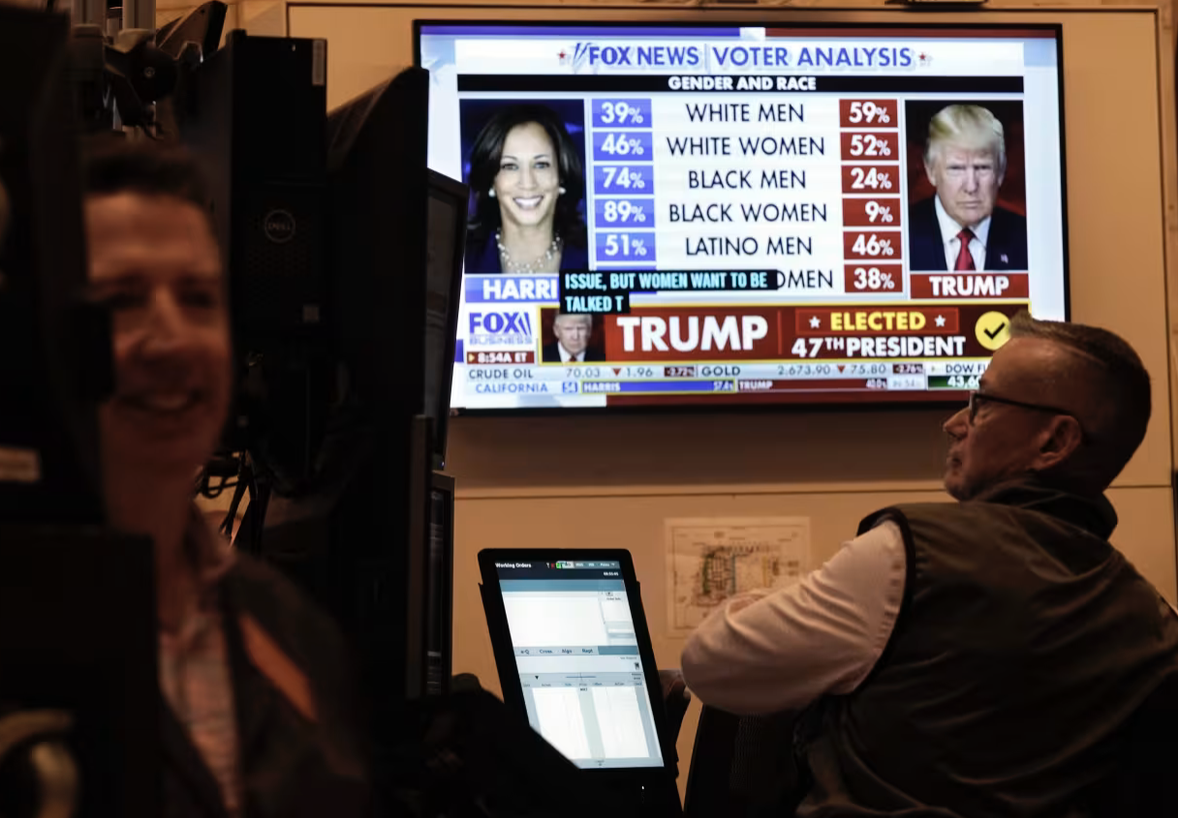By: The Editorial Board – wsj.com – November 6, 2024
Stocks stage a relief rally as investors foresee fewer taxes and less regulation.
Investors seemed to love the election result, as the Dow Jones Industrial Average climbed 3.6% and the Russell 2000 index 5.8%. The latter reflects buoyed confidence for small businesses, which bear the brunt of the Biden Administration’s regulatory assault and looming higher taxes. Call it a relief rally.
Stocks rise and fall, and no doubt they’ll fall again if Mr. Trump’s policies turn out to disappoint. But Wednesday’s rally suggests a groundswell of growth optimism. Voters have taken off the table a big tax increase and continued regulatory barrage. Businesses can breathe a sigh of relief that Elizabeth Warrenacolytes Rohit Chopra and Lina Khan won’t spend the next four years harassing them.
Mr. Trump’s threat of tariffs presents economic risks, but voters seemed to decide that the bigger danger was a repeat of the Biden-Harris economic policies that gave them the highest inflation in 40 years and lower real wages. While the affluent who own assets have done well in the Biden years, most other Americans have fallen behind.
This is what the simple-minded soothsayers—we’ll spare their names—have missed in their lectures about the supposedly booming economy. How could Americans be unhappy, they ask? Well, inflation-adjusted weekly earnings remain lower than when Mr. Biden took office and began to increase only this past year as higher interest rates helped bring inflation under control.
But higher interest rates have also made buying a home and car less affordable. The bottom 40% of earners accounted for 6% of new auto purchases last year, compared to 18% in 2019. Meantime, the average mortgage payment for a new home has roughly doubled over the last four years.
All of this explains why Mr. Trump attracted a broader coalition than during his past two presidential campaigns and appears poised to win the popular vote. Mr. Trump this year won 45% of Hispanics, 38% of Asians, 54% of Hispanic men, and 20% of black men. In 2016 he drew 28% of Hispanics, 27% of Asians, 32% of Hispanic men and 13% of black men. (See the nearby chart.)
Americans earning less than $100,000 also favored Mr. Trump despite Democratic efforts to win their vote with handouts in the March 2021 spending blowout and Ms. Harris’s promises of more. Voters are smarter than the commentariat and could connect the dots between Democrats’ spending binge and inflation that has eroded their wages and living standards.
Two-thirds of voters rated the economy as poor or not so good, and they supported Mr. Trump, 69%-29%. This is a major reason that Ms. Harris’s victory margins in solid Democratic states like New York (11.6%), Illinois (8.2%), Minnesota (4.3%), New Jersey (5%) and New Mexico (5.5%) shrank to roughly half of Mr. Biden’s in 2020.
Mr. Trump remarkably won 38% of the vote in New York City’s Queens borough and 27% in the Bronx, buoyed by support among minorities. Many Democrats in blue states abstained this year from voting in the presidential race, and some voted for Mr. Trump to show their dissatisfaction with the results of the left’s economic and social policies.
Millions of Americans who didn’t back Mr. Trump in 2016 or 2020—including some who have never voted for a Republican for President in their lives—cast their ballots for him this year. If Democrats showed a hint of introspection, they’d realize it’s because their policies left most Americans worse off.
To see this article in its entirety and to subscribe to others like it, please choose to read more.
 Listen Online
Listen Online Watch Online
Watch Online Find a Station in Your Area
Find a Station in Your Area








 Listen Now
Listen Now Watch Online
Watch Online
